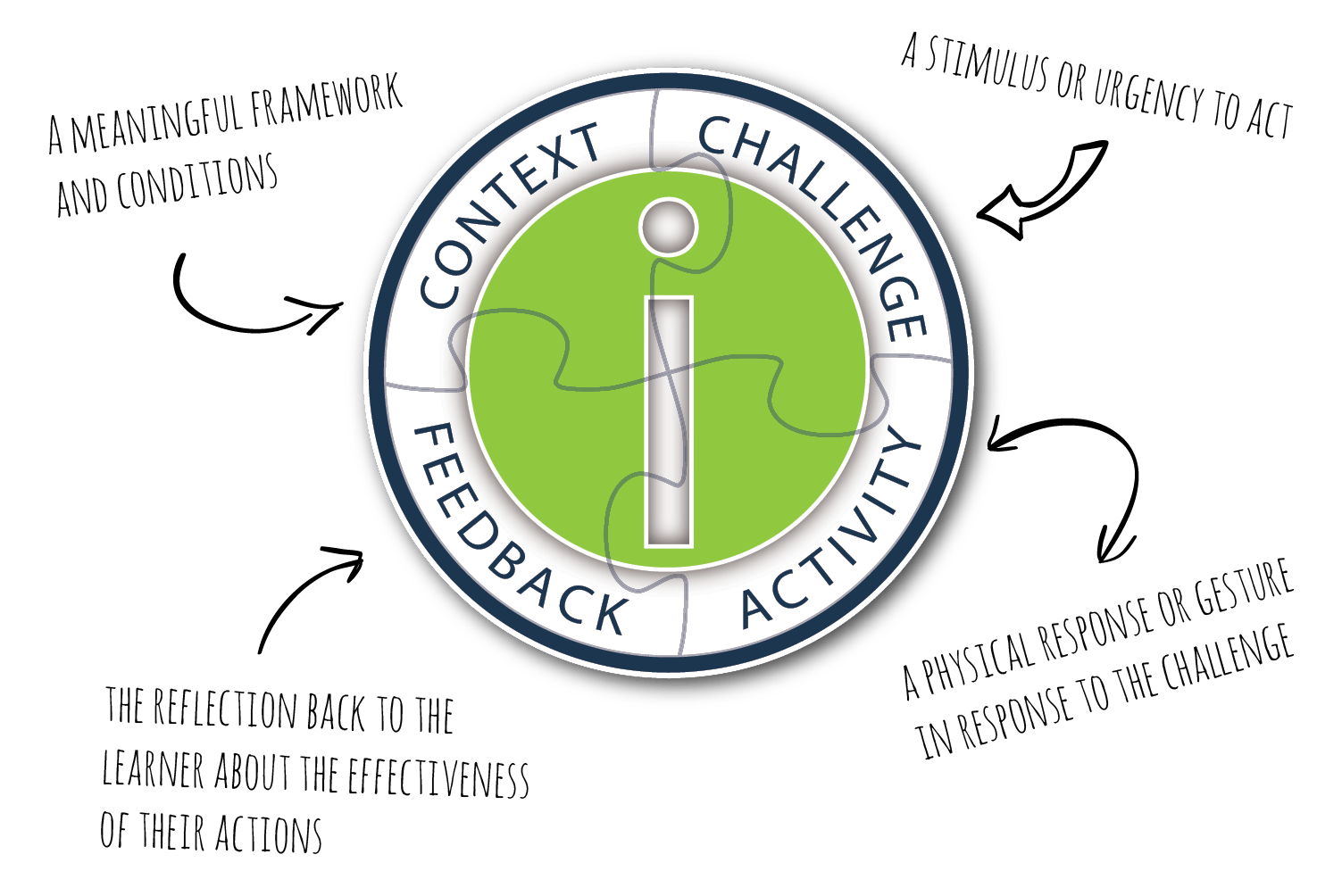Classic Narrative Models In eLearning
In the expanding universe of digital learning, content alone is no longer enough. As attention spans dwindle and competition for learners' focus intensifies, eLearning developers and Instructional Designers face a critical challenge: how to transform information into experiences that resonate, engage, and ultimately change behavior. The answer lies in one of humanity's oldest cognitive tools—storytelling.
Storytelling isn't merely an artistic flourish to make learning more palatable; it's a fundamental psychological framework that the human brain is wired to process. When information is presented as isolated facts, we typically activate only the language-processing areas of our brain. However, when that same information is embedded within a narrative, our brains light up with sensory, emotional, and memory-related activities. This neurological difference explains why most of us can recall stories from childhood but struggle to remember lists of facts from last week's presentation.
This article explores how classic narrative models can be deliberately implemented in eLearning environments to create experiences that don't just inform but transform. We'll examine proven storytelling frameworks, provide practical implementation strategies specific to digital learning contexts, and showcase real-world examples that demonstrate the measurable impact of narrative-driven approaches.
The Cognitive Science Behind Storytelling In Learning
Before diving into specific models, it's worth understanding why storytelling is particularly effective in learning contexts. Research in cognitive psychology has identified several mechanisms through which narrative enhances learning:
- Emotional engagement
Stories trigger emotional responses that activate the brain's limbic system, releasing neurotransmitters like dopamine that aid in memory formation and recall. - Neural coupling
When engaged in a compelling narrative, listeners' brains synchronize with the storyteller's, creating shared experiences that facilitate understanding. - Contextual framework
Stories provide a meaningful context for information, helping learners organize new knowledge into existing mental models. - Reduced cognitive load
Narrative structures are familiar patterns that allow information to be processed more efficiently than disconnected facts. - Mirroring mechanisms
When we identify with characters in stories, mirror neurons in our brains fire as if we were experiencing the events ourselves, deepening learning through vicarious experience.
These cognitive benefits make storytelling not just a nice-to-have but a necessary component of effective eLearning design. Now, let's explore how classic narrative models can be adapted for digital learning environments.
Classic Narrative Models Reimagined For eLearning: The Hero's Journey In Learner Progression
Joseph Campbell's "Hero's Journey" provides a powerful framework for structuring learning paths. This universal pattern of transformation can be mapped directly to the learner experience:
-
The Ordinary World → Initial Knowledge State
Begin by acknowledging the learner's current reality and challenges.
Example implementation: Opening scenario that presents a typical workplace problem.
-
The Call To Adventure → Learning Objective Introduction
Frame the learning objective as an invitation to growth.
Example implementation: Interactive challenge that reveals the skills gap.
-
Meeting The Mentor → Instructional Guidance
Introduce expert perspectives and guidance.
Example implementation: Video interviews with Subject Matter Experts.
-
Crossing The Threshold → Core Content Engagement
Mark the transition to active learning with a compelling interactive element.
Example implementation: Branching scenario where learners make initial decisions.
-
Tests, Allies, And Enemies → Practice Activities
Provide incremental challenges with feedback.
Example implementation: Gamified quizzes with character allies who provide hints.
-
The Ordeal → Complex Application
Present a comprehensive challenge that requires applying multiple skills.
Example implementation: Simulated workplace scenario with time pressure.
-
Return With The Elixir → Knowledge Transfer
Facilitate reflection on application to real-world contexts.
Example implementation: Action planning tool for implementing new skills.
An eLearning program on change management might begin with a scenario showing a failed organizational change initiative (Ordinary World), then introduce the expert facilitator who will guide learners through mastering change management principles (Meeting the Mentor). As learners progress, they face increasingly complex scenarios where they apply these principles (Tests and Ordeals) before developing their own change management plan for their organization (Return with the Elixir).
The Three-Act Structure For Module Design
Originally from dramatic theory, the three-act structure offers a clean template for individual learning modules:
-
Act One: Setup
Establish context, introduce the problem, and set learning expectations.
eLearning implementation: Interactive opening that establishes relevance through personalized scenarios based on the learner's role or industry.
-
Act Two: Confrontation
Present core content with escalating complexity and stakes.
eLearning implementation: Progressive content reveals with challenges that build upon each other; incorporate plot twists through unexpected case studies or scenario developments.
-
Act Three: Resolution
Demonstrate mastery through application and reflection.
eLearning implementation: Complex simulations or case analyses with multiple valid approaches; reflection prompts that connect to the learner's specific contexts.
For example, a compliance training module might open with a relatable scenario showing the consequences of non-compliance (setup), then guide learners through increasingly complex decision points related to compliance issues (confrontation), before concluding with a comprehensive simulation where they must navigate multiple compliance considerations simultaneously (resolution).
The CCAF Model For Interactive Design
The Context, Challenge, Activity, Feedback (CCAF) model, developed by Dr. Michael Allen, provides a micro-structure for designing engaging interactions within a larger narrative:
-
Context
Establish the scene and rationale.
Digital implementation: Visual storytelling, scenario videos, or immersive VR environments.
-
Challenge
Present a meaningful problem that motivates engagement.
Digital implementation: Branching scenarios with stakes and consequences.
-
Activity
Enable authentic decision making or application.
Digital implementation: Role-play simulations, drag-and-drop prioritization exercises, or interactive case analyses.
-
Feedback
Provide realistic consequences rather than simple right/wrong responses.
Digital implementation: Character responses, simulated outcomes, or dashboard metrics showing impact.
Using the CCAF model within a safety training course, you might create an interaction where learners encounter a workplace safety issue (Context), must identify all potential hazards within a time limit (Challenge), select appropriate responses through a simulation (Activity), and then see the consequences of their decisions played out through animated sequences (Feedback).
Practical Implementation Strategies For eLearning Narratives
Character Development For Learner Engagement
Characters serve as powerful vehicles for emotional connection in eLearning narratives:
1. Learner Avatar
Allow customization of a protagonist that represents the learner in the narrative.
Implementation: Character creation options at the beginning of the course.
2. Relatable Mentors
Develop guide characters with specific expertise and personalities.
Implementation: Video actors or animated characters who provide guidance throughout.
3. Authentic Antagonists
Create realistic challenges through characters representing common obstacles.
Implementation: Characters who embody resistance to change, information overload, or competing priorities.
4. Community Of Practice
Include peer characters who progress alongside the learner.
Implementation: Virtual cohorts with AI-driven peer responses or actual collaborative learning elements.
Digital Storytelling Tools And Techniques
Today's eLearning platforms offer numerous tools for implementing narrative structures:
- Branching scenarios
Create adaptive paths based on learner decisions. - Interactive videos
Embed decision points within video narratives. - Digital motion comics
Combine visual storytelling with limited animation. - Virtual Reality narratives
Create immersive story-worlds for experiential learning. - Gamified narrative frameworks
Embed learning objectives within game mechanics.
Measuring Impact
To validate the effectiveness of narrative approaches, consider measuring:
- Engagement metrics
Time spent, completion rates, and voluntary revisits. - Emotional response
Self-reported interest and relevance. - Knowledge retention
Comparative assessment performance over time. - Behavioral transfer
Observable application of learning to real-world contexts. - Social sharing
Course recommendations and discussions generated.
Case Studies: Narrative Model Success Stories In eLearning
Corporate Training Transformation
A multinational telecommunications company transformed their cybersecurity training from a traditional, information-heavy format to a narrative-driven experience featuring an IT analyst character investigating a series of security breaches. The redesigned course followed the three-act structure with branching decision points. Results included:
- 94% completion rate (up from 62%).
- 48% increase in reported relevance scores.
- 36% improvement in security policy compliance.
Educational Storytelling At Scale
A large online university reimagined their Introduction to Business Ethics course using the Hero's Journey framework. Students assumed the role of a new manager facing escalating ethical dilemmas across eight modules. The narrative incorporated real-world case studies and industry-specific scenarios. Outcomes included:
- 27% increase in student satisfaction scores.
- 41% improvement in assessment performance.
- Significant increase in forum discussion participation.
Conclusion: Crafting Your eLearning Narrative Strategy
The implementation of classic narrative models in eLearning isn't merely about adding stories to your content—it's about fundamentally reconceptualizing the learning experience through the lens of storytelling. By strategically applying these time-tested frameworks, eLearning developers can create experiences that engage learners cognitively and emotionally while improving knowledge retention and application.
To begin implementing these approaches in your eLearning development process:
- Identify the overarching narrative structure most appropriate for your learning objectives.
- Map your content to the chosen narrative framework.
- Develop characters and scenarios that reflect your learners' real-world contexts.
- Incorporate decision points that create agency and personalization.
- Balance narrative engagement with learning efficiency.
- Measure both engagement and learning outcomes to refine your approach.
The digital learning environment offers unprecedented opportunities to implement dynamic, adaptive, and personalized narratives that transform information into meaningful experiences. By adding storytelling techniques to your eLearning toolkit, you can create digital learning experiences that don't just deliver content but inspire change.
As you develop your next eLearning project, ask yourself not just what information needs to be conveyed, but what story needs to be told. The answer to that question may be the key to unlocking truly transformative learning experiences in the digital age.









